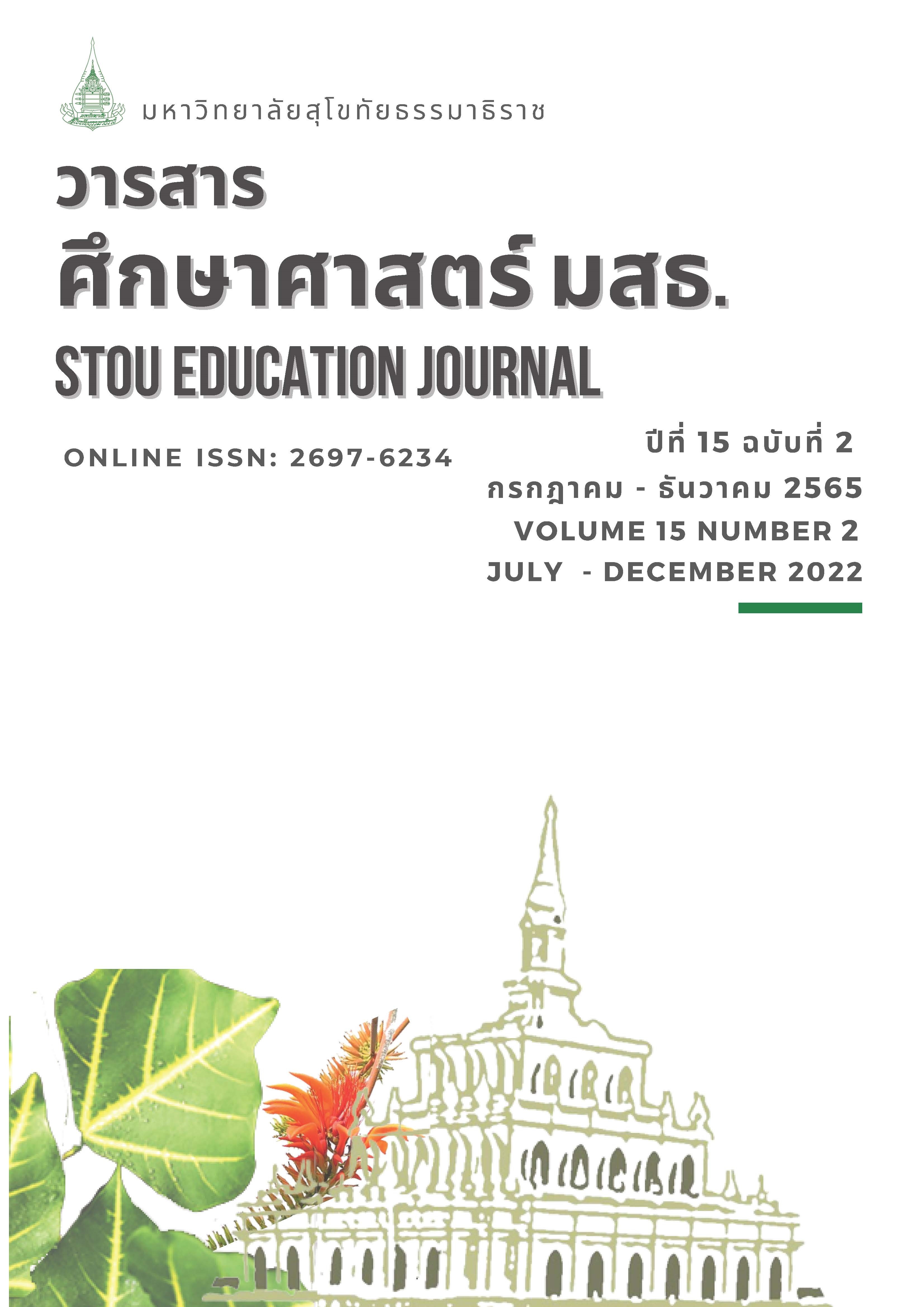Assessment for Learning in Chinese Speaking Skill of Eighth Grade Students by Using Task -Based Learning
Main Article Content
Abstract
The purposes of this research were 1) to develop the assessment for learning in Chinese speaking skill by using TBL (Task-Based Learning), 2) study the results from assessment for learning in Chinese speaking skill by using TBL (Task-Based Learning). The sample consisted of 45 students in eighth grade. The research instruments consisted of 4 lesson plans, speaking skill assessment form, students work assessment form and interview form. Data analysis were frequency, percentage and content analysis. The research results were as follows: 1) Assessment for learning in Chinese speaking skill by using TBL (Task-Based Learning) was characterized for students to improve their Chinese speaking skills through task-based learning management. It also provided students with positive feedback and opportunities for students to assess or check their own learning for apply the results of the assessments to develop students' speaking skills and teacher’s teaching. 2) The results of using Assessment for learning in Chinese speaking skill by using TBL (Task-Based Learning) revealed that the Chinese speaking skill and work pieces of students were passed the assessment specified criteria (at least moderate level). The result of students interview about Chinese speaking skill by using TBL (Task-Based Learning) revealed that students have improved their Chinese speaking skill and they could take the results for planning to improve their Chinese speaking skill.
Article Details
References
กระทรวงศึกษาธิการ. (2551). หลักสูตรแกนกลางการศึกษาขั้นพื้นฐาน พุทธศักราช 2551. โรงพิมพ์ชุมนุมสหกรณ์การเกษตรแห่งประเทศไทย.
____________________. (2557). แนวปฏิบัติการวัดและประเมินผลการเรียนรู้ตามหลักสูตรแกนกลางการศึกษาขั้นพื้นฐาน พุทธศักราช 2551 (พิมพ์ครั้งที่ 4). โรงพิมพ์ชุมนุมสหกรณ์การเกษตรแห่งประเทศไทย.
จตุภูมิ เขตจตุรัส. (2560). วิธีการและเครื่องมือประเมินการเรียนรู้ของผู้เรียน. คณะศึกษาศาสตร์ มหาวิทยาลัยขอนแก่น.
โชติกา ภาษีผล, ณัฏภรณ์ หลาวทอง, และ กมลวรรณ ตังธนกานนท์. (2558). การวัดและการประเมินผลการเรียนรู้. โรงพิมพ์แห่งจุฬาลงกรณ์มหาวิทยาลัย.
วรรณา พัชนี. (2556, มิถุนายน 23). รูปแบบการสอนที่เน้นภาระงานเพื่อปรับพฤติกรรมการเรียนภาษาอังกฤษของ นักเรียนชั้นมัธยมศึกษาปีที่ 4 โรงเรียนเมืองนครศรีธรรมราช. https://www.gotoknow.org/posts/479069
ศิริชัย กาญจนวาสี. (2556). ทฎษฎีการทดสอบแบบดั้งเดิม (พิมพ์ครั้งที่ 7). โรงพิมพ์แห่งจุฬาลงกรณ์มหาวิทยาลัย.
สำนักงานคณะกรรมการการศึกษาขั้นพื้นฐาน. (2551). ตัวชี้วัดและสาระการเรียนรู้ภาษาจีน ตามหลักสูตรแกนกลางการศึกษาขั้นพื้นฐาน พุทธศักราช 2551 กลุ่มสาระการเรียนรู้ภาษาต่างประเทศ. โรงพิมพ์คุรุสภาลาดพร้าว.
Board of Studies New South Wales. (2003). Mathematics year 7-10 syllabus course description. http://arc.boardofstudies.nsw.edu.au/go/7-8/assessment-forlearning-in-years-7-10/#The-principles-of-assessment-for-learning
Ellis, R. (2003). Task-based language learning and teaching. Oxford University Press.
Northern Ireland Curriculum. (2007). Assessment for learning for key stage 3. International Journal of Technology and Design Education, 19(1), 37-54.
The Quality Improvement Agency for long Learning. (2008). Teaching and learning Program. http://tlp.excellencegateway.org.uk/tlp/xcurricula/el/assets/documents/al_O.pdf
William, D. C., Harrison, C. Lee, B. M., & Black, P. (2004). Teacher developing assessment for learning: impact on student achievement. Assessment in Evaluation, 11(1), 51-64.


